There are few better ways of bringing a bit of zest to your backyard and pantry than planting a lime tree. But if things go wrong and your lime tree looks like it might be dying, you’re going to want to know why and how to fix it.
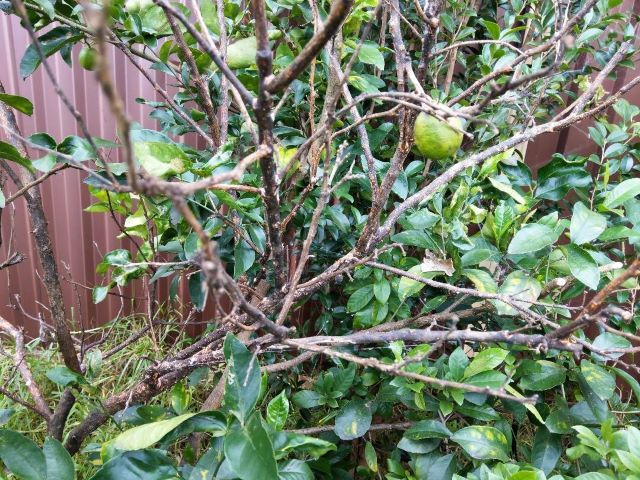
If your lime tree looks like it might be dying, the most common causes are due to cold weather and frost, incorrect watering, root damage, disease, pests, or poor soil nutrients.
Let’s take a closer look at each of these problems and how to fix them so you can enjoy a healthy harvest of limes.
Related: Growing Key Limes | Kaffir Lime Fruit Uses | How To Grow A Lemon Tree | What is a Pomelo and How to Eat One | Cause of Small Oranges
Table of Contents
Cold Weather and Frost Causing Lime Tree Death
It might sound obvious, but limes and other citrus fruits like warm weather and sun. Although they can survive in cooler climates, a harsh frost can be enough to shut them down for good.
All citrus trees originate from subtropical climates and need protection from cold snaps and sudden temperature drops. Most lime trees prefer temperatures above 41 °F (5 °C). Below this and the tree could experience damage and even death.
Younger lime trees not yet established and small trees are particularly vulnerable. This is one of the many reasons it can be a good idea to start your lime tree out in a pot or container. In the event of an incoming dip in temperatures, you can keep it safe and warm by bringing it indoors.
If your young lime tree is planted outside and not easily transplantable, think about surrounding it with a tomato cage or similar structure if it’s small enough. Then you can cover it with fleecing to protect it from cold weather fronts.
Incorrect Watering Can Cause Lime Trees to Die
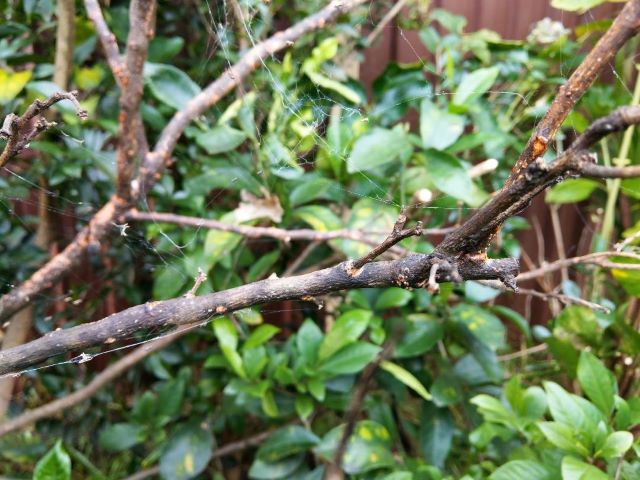
A common cause of lime trees dying or withering is improper water levels in the soil.
Too Much Water
If the lime tree is unable to soak up enough water, you may notice the tree growing brown at the tips.
You may also notice leaves curling evenly or cupping along their entire length, before eventually dropping off.
Somewhat confusingly, this can also be due to too much water in the soil as opposed to too little.
Lime tree roots are relatively shallow, and soak up water from the top layers quite swiftly. But if the roots are waterlogged or the lime tree is sitting in non-draining water for too long, this can lead to the roots rotting and dying.
You might notice them becoming mushy, overly soft, and easy to break. In such instances, roots are unable to soak up the nutrients and water that the lime tree needs.
If your lime tree is in a pot, ensure it’s not a ‘self-watering’ construction that sits in water and constantly ‘wicks’, or draws water, upwards. You need to ensure the planting container is fast-draining and won’t allow the tree to stagnate.
Similarly, if your tree is planted outside, try to avoid placing it in clay-heavy soils which retain moisture. If you need to improve the drainage of the soil, mix in plenty of compost, manure, or shredded leaves.
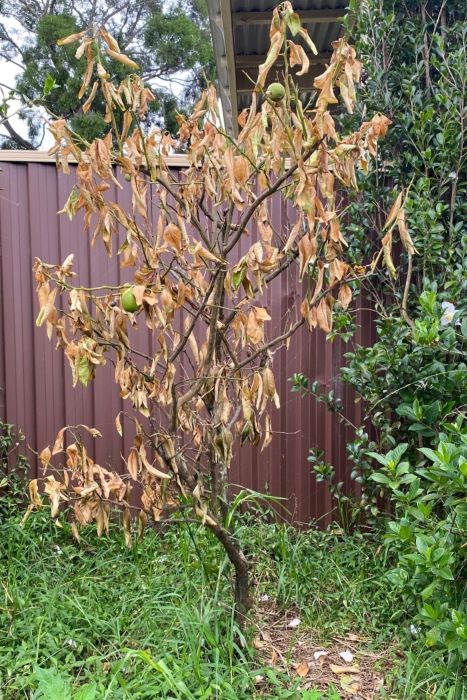
Not Enough Water
Conversely, lime trees placed in exposed, elevated and windy areas run the risk of the soil drying out too quickly.
In these instances, lime trees will require regular watering during the warmer months.
To improve water retention in the soil if it is too fast-draining, try using organic mulch.
Avoid placing mulch directly against the tree, as this can lead to collar rot and other diseases of the trunk.
How do you know if your soil needs more moisture? Scratching the soil an inch or two with your fingers and checking to see if it’s dry should indicate whether you can water more during warmer seasons. Or you can use a water gauge like this one.
If there’s any noticeable moisture in the soil or on the surface, hold off until this has dried out before adding more water.
Root Damage
Any form of damage to the lime tree’s root system can inhibit the trees’ ability to draw the nutrients it needs from the soil. Roots can be damaged in more ways than being left to stagnate in too much water.
Other garden visitors, including those you may have introduced to the garden yourself, can cause issues for lime tree roots, which lie quite close to the surface.
Chickens in particular have a reputation for scratching up soil wherever they can get a chance. If this is in and around your lime tree, particularly if it is still trying to establish itself, this can end up damaging the root system. To the extent that the lime tree can wither and even die.
Solutions
Putting down galvanized mesh near to the lime tree trunk can help protect the soil against unwanted burrowers and scratchers. Pin it down securely using tent pegs or garden pins, being careful not to damage the roots yourself. If you don’t like how this looks, you can then cover the mesh with mulch or soil.
Another option I like here is to place large stones or even old bricks around the base of the lime tree. Poultry can’t move the heavy stones and therefore your lime tree roots remain unharmed.
It’s also important not to plant any other crops beneath or near the lime tree that could interfere and compete with the root system.
Avoid planting any crops with tough or deep root systems themselves. They could end up extending through and damaging the lime tree’s own root network.
If you would like to plant crops beneath your lime – and this can be a great way of boosting the biodiversity of your garden! – stick to very shallow-rooted plants. That way, they won’t compete too heavily with your lime tree. For example fresh herbs or cover crops for weed suppression that don’t mind being shaded out by your lime tree.
Pests Can Cause Your Lime Tree to Die
There are a number of hungry critters that will happily munch on your lime tree and its leaves if given the opportunity.
For healthy, well-fed lime trees, this may not be a serious problem. However, rampant feasting by garden pests can damage the lime tree and its ability to photosynthesize to the extent that it struggles to grow or even live.
Scale

Scale bugs are small, dark round bugs that suck sap from the tree and can sit between the leaves and stems.
They enjoy warm, dry climates, the same sort of weather conditions preferred by the lime tree itself!
A scale bug-damaged lime tree can appear withered and sickly. Leaves may turn yellow or drop away.
By sucking the sap, the scale bugs remove nutrients from the lime tree that it needs to keep itself healthy and productive.
They also produce what is known as ‘honey dew’, a sticky substance which can lead to the spreading of black, sooty mold.
Aphids
Aphids can cause a similar headache for the intrepid gardener. These tiny green bugs will also munch on the lime tree whilst producing a sticky honeydew substance that can promote the spread of black mold.
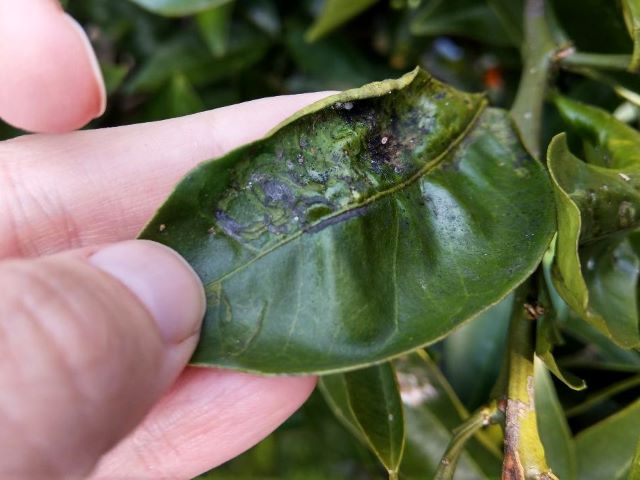
Solutions for Scale and Aphids
Techniques for managing these relatively widespread lime tree pests are similar.
For smaller, burgeoning infestations, using a hose to gently get rid of them can be effective.
Another natural method for keeping the ecosystem balanced is by making sure your garden is attractive to natural predators such as ladybirds and lacewings.
In terms of treatments for aphid and scale bug infestations, neem oil is an organic way of preventing or treating infestations.
Some gardeners also like to produce their own, homemade repellent. You can do this by using bleach-free dishwasher soap mixed with water, before applying this to plants you wish to protect. Organic insecticidal soap products are also available.
Lime Tree Diseases Can Cause Death to the Tree
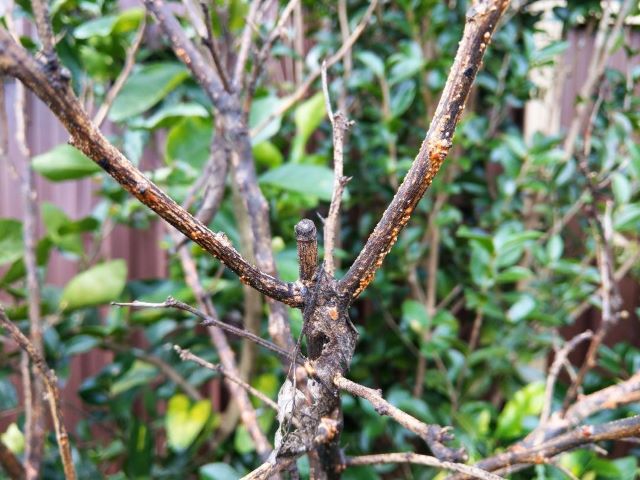
Many diseases experienced by lime trees can actually be a symptom of pest infestation as well. So the same preventative steps described above are useful in avoiding your lime tree becoming infected with disease.
Sooty Mold
Sooty mold is a black, soot-like fungus that often grows on the sticky secretions left by insects. In severe cases, it can restrict the lime tree’s ability to photosynthesize. To the extent the lime tree may struggle to live and grow healthily.
Preventing aphids, scale bugs, or other sticky creatures is the best method for preventing black mold infestations.
Citrus Canker
Citrus canker is a bacterial infection that can cause brown or yellow spots on lime tree leaves. It can unfortunately spread to the fruit as well.
Copper-based, organic fungicides can be considered as a way of trying to prevent the spread.
The bacteria thrive in damp, moist, poorly ventilated conditions. So giving lime trees plenty of space for good air-flow and plenty of sun will also help.
This is another reason why older lime trees need pruning at the top. Pruning allows the lower branches to be exposed to the sun and kept out of consistent shade.
When you water your lime tree, water at the base rather than watering the leaves. Residual dampness on the leaves themselves can help promote the spread of canker and other diseases.
Citrus Greening
Citrus greening is another, potentially fatal affliction spread by the Asian citrus psyllid fly. This can cause yellow veins to appear on lime tree leaves, die back on the stems, and bitter fruit.
There is, unfortunately, no cure for this disease and a severely infected tree will need to be removed and destroyed.
Remove any damaged leaves as soon as possible and try to reduce pest infestation by using neem oil. Promote a healthy biosphere with natural predators. And inspect the tree regularly, removing any bugs or eggs by hand if necessary.
Lack of Nutrients Causes Lime Tree Death
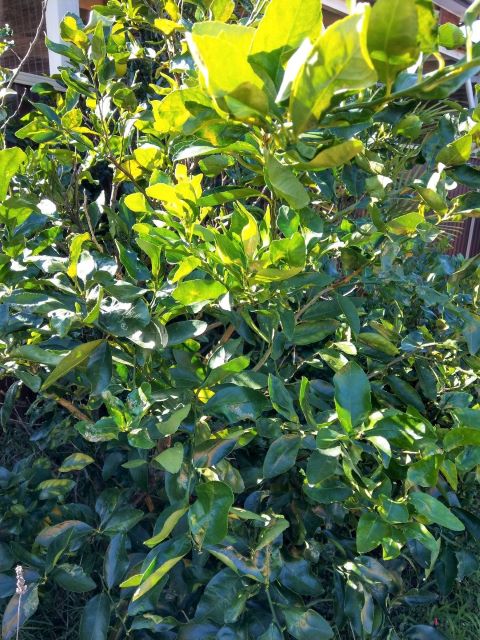
Finally, if your lime tree is looking withered and tired, it might not getting the nutrients it needs.
Lime trees are heavy feeders, so to meet their needs, I really like this organic citrus fertilizer for a complete feed.
Diluted seaweed solution added to the soil at the point of planting can boost nutrient levels. As well as improving soil microbe levels.
Top dressing with high-quality compost and aged manure can also help feed and protect the lime tree roots.
Organic mulch placed in spring is an effective way of helping the lime tree retain moisture. As well as gently feeding the soil with further nutrients as it breaks down.
Citrus Tree Health
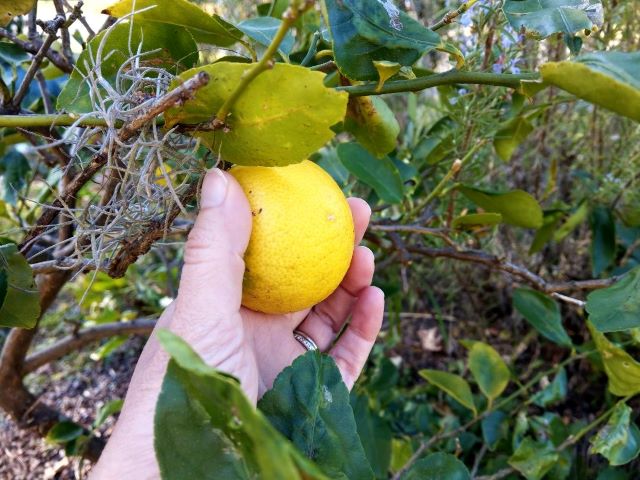
We have a few other articles about citrus tree health that will ensure your lime tree thrives. You might like to have a look at them so if your lime tree is affected by one of these problems, you’ll know what to do.
Some Favorite Gardening Products
Further reading:
